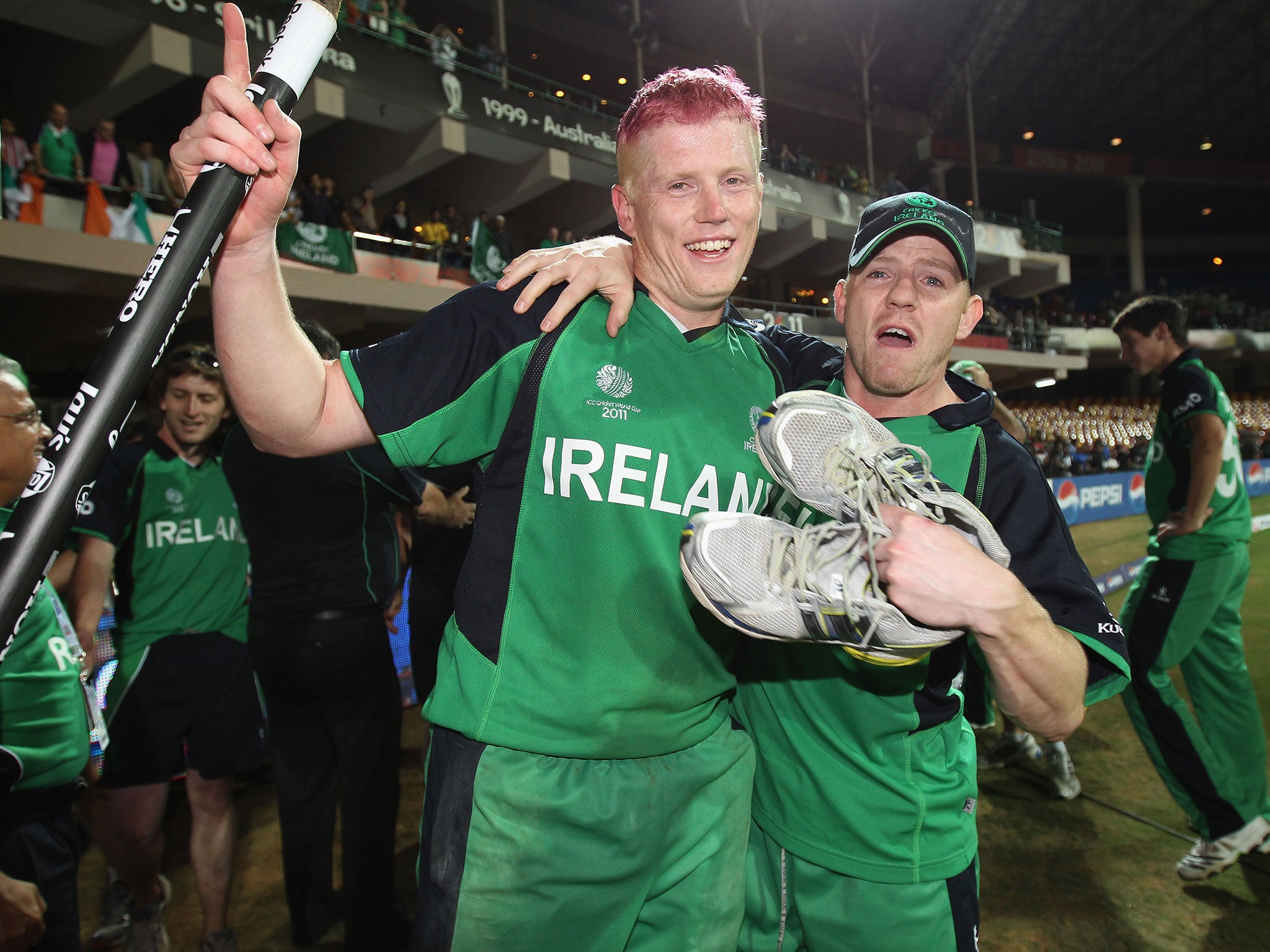Cricket World Cup 2015: From a rabble to dark horses
As Ireland rock up in Nelson to take on West Indies, Ewan MacKenna reflects on how far they have come

Back in 2001, Irish cricket was ready to make a giant leap via a last small step and finally qualify for a World Cup. They had been edging closer to the tournament across the previous decade, to the point they were just eight runs away from the 1999 competition. With a decent team heading for qualifying at the ICC Trophy in Canada, they fancied themselves. Evidently, a little too much.
The losses to the United States, Denmark, Scotland, UAE and Holland that followed were bad enough. That some players saw the trip as a junket was far worse.
That Dekker Curry – a player who spent his weekdays shooting bolts into the skulls of cattle in an abattoir – was sent home for assaulting coach Ken Rutherford because he wasn’t allowed to open the batting was worse still.
But the murkiest depth to which Ireland plunged was when they asked a journalist in the press box to play as a substitute fielder. They set off with dreams within their clasp, returned as laughing stocks.
It can be hard to fathom now, with Ireland on the brink of their third World Cup, that a short time ago they were such a rabble. If that was the greatest humiliation, there was no shortage of competition.
Talking to those involved, there’s a stream of awkward tales: a player was assaulted by a team-mate as he slept, while on another evening the Royal Ulster Constabulary entered Belfast’s Europa Hotel after squad members had gone for one another over the attentions of a female physio. Surprised by the frenzied reaction of the police, they later learned that George Mitchell happened to be staying there at an edgy moment in the peace process.
At least the players got some wild memories because there wasn’t a whole lot else for them. The norm was to pay for their own travel. If you were good enough, your international career began with a single jersey and a talk regarding how it had to last you a lifetime as replacements weren’t free. And the opposition was just as threadbare with the 2004 fixture list including Hertfordshire, the Duchess of Norfolk’s XI and the Free Foresters.
Little wonder that a year later, after Ireland were thumped by Scotland in the ICC Trophy final they hosted, an impromptu game of Gaelic football broke out on the crease at Clontarf. The imaginations of a nation remained uncaptured – at least for another two years. But in truth, cricket never had a right to make an impact in Ireland.
First off, the sports scene is plenty claustrophobic. Secondly, it had always been “their” game, an unwanted import, a Protestant sport that represented the wrong side of the past for many. At one stage, the current all-rounder John Mooney and his brother refused to play a club game at North Down because a Union flag was flying.
If there was a turning point, it was the 2007 World Cup, with the win over Pakistan on St Patrick’s Day that made the back pages of the newspapers, only for the passing of Bob Woolmer to make the front.
To make a long story into a sentence, Adi Birrell came to coach, Trent Johnston came to lead and Warren Deutrom came to run the organisation. They brought belief as well as professionalism and were a trinity that managed to scrub away the sins of the past. But while the Irish had stopped betraying themselves, there was one more opponent still to overcome: the elitist old boys’ club of international cricket.
Before that 2007 tournament, the Ireland team had to hold a golf day because they had been given suits but had to raise money for shoes. Afterwards there would be delayed bonuses. Tight, but explainable when you realise the International Cricket Council rewarded them with $56,000 for participating, while Zimbabwe received $11m.
When Ireland played Bangladesh in the Super Eights, India and Pakistan fans found common ground in demanding money back outside the Bridgetown Oval as they had bought tickets in case they had finished one and two in their groups and couldn’t understand these imposters.
Even in 2011, respect was limited and as bars in Dublin switched over their television sets to watch a pink-haired Kevin O’Brien bludgeon England, a smug attitude prevailed from the commentary that hinted at a group of mercenaries. Yet of the England team that day, four weren’t born there, while only two of the Irish line-up were from elsewhere. On top of that, England’s squad had an Irishman – the England captain Eoin Morgan – but Ireland had no Englishman. Aside from Morgan, this time the Derry fast bowler Boyd Rankin cannot play for his home nation because he has previously played for England too.
Yet progress has been swift since 2007. In 2006, the Irish Cricket Union had 13,000 participants, three staff on their payroll including one part-time, no contracted players, a turnover of €260,000 and commercial revenue of €104,000. By 2013 participation numbers were 40,414, there were 29 on the payroll, 23 contracted players, a turnover of €4.3m and commercial revenue of €1.8m.
Now there’s the aim of Test status by 2020. But in the short term, they are again squaring up to the big boys over the coming weeks. Tonight’s game against a West Indies side who are capable of their own calamities represents a real chance of a shock.
Join our commenting forum
Join thought-provoking conversations, follow other Independent readers and see their replies
Comments
Bookmark popover
Removed from bookmarks